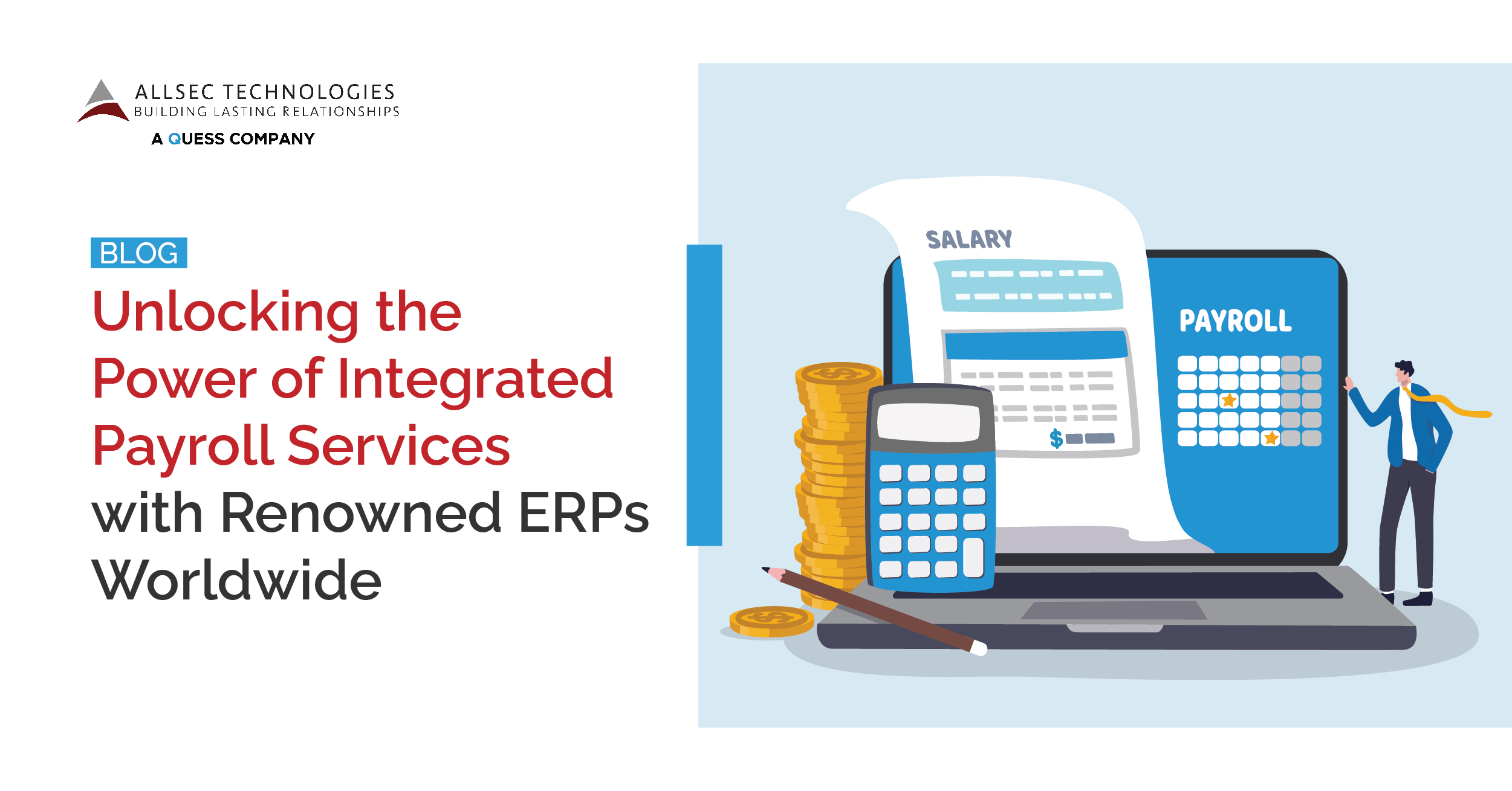
Many businesses use separate tools for HR data, working hours, attendance, time off requests, and payroll processing. This fragmented approach leads to data opacity, redundant work, and resource wastage. it’s vital to unify HR and payroll software. This blog explores the advantages of establishing integrated systems.
Streamlined Data Management
Merging payroll services with ERPs eliminates data silos and ensures seamless data flow across the organization. Employee information, attendance data, leave records, and compensation details are automatically synchronized, reducing the risk of errors and ensuring data accuracy. This, in turn, enhances overall operational efficiency.
Real-time Visibility
Clubbing a payroll platform with ERPs can provide real-time visibility into financial and human resource data. Businesses can access up-to-the-minute insights into payroll expenses, tax liabilities, and compliance status, thus empowering the senior management to make informed organizational decisions.
Compliance and Accuracy
Compliance with ever-evolving payroll regulations is a significant challenge for businesses. Payroll solutions integrated with ERPs help in automating tax calculations, deductions, and reporting, ensuring that organizations remain compliant with local and global tax laws. This capability minimizes the risk of costly penalties and legal complications.
Cost Reduction
Unified payroll solutions cut operational costs by eliminating manual data entry and redundant processes. It reduces the need for dedicated payroll staff, thus freeing up resources for strategic HR initiatives.
Enhanced Employee Experience
Integrated payroll systems can provide employees with self-service portals to independently access payslips, tax information, and personal details. This autonomy enhances the employee experience while reducing the administrative workload for HR teams.
Data Analytics and Reporting
Renowned ERPs offer powerful reporting and analytics tools that, when coupled with payroll data, enable organizations to gain deep insights into labor costs, workforce productivity, and employee trends. These insights drive data-driven decision-making and help in optimizing workforce management strategies.
Scalability
Payroll services, when paired with ERPs, are highly scalable, making them suitable for businesses of all sizes. Whether a company has 50 employees or 50,000, the system can adapt to changing requirements and expanding workforces.
Risk Mitigation
Combining payroll services with ERPs enhances data security and reduces the risk of data breaches. ERPs often come with robust security features to ensure sensitive payroll information remains confidential and protected from unauthorized access.
In conclusion, unifying HR and payroll systems is a strategic imperative for organizations seeking enhanced operational efficiency, compliance, cost reduction, and improved employee experiences. This fusion of technologies not only streamlines data management but also empowers data-driven decision-making. It’s a transformative step toward a smarter, more efficient future for businesses of all sizes, enabling them to optimize their workforce management and financial processes. For those looking to explore these benefits further, seasoned industry experts at Allsec are available to provide guidance and support you in this journey.


